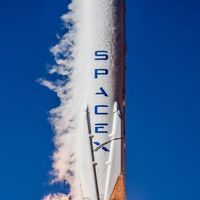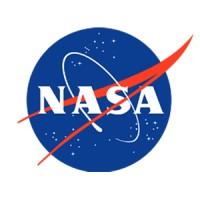NASA's Starliner Dilemma: A Race Against Time and Risk
August 16, 2024, 3:46 am

Location: United States, District of Columbia, Washington
Employees: 5001-10000
Founded date: 2002
Total raised: $7.53B

Location: United States, Maryland, Greenbelt
Employees: 10001+
Founded date: 1958
Total raised: $25.7B

Location: United States, Illinois, Chicago
Employees: 10001+
Founded date: 1916
Total raised: $25.01B
NASA is at a crossroads. The agency faces a critical decision regarding the return of astronauts aboard the Boeing Starliner from the International Space Station (ISS). The clock is ticking, and the stakes are high. With a tentative deadline set for late August, the potential for delays looms large. The mission's safety hangs in the balance, and the implications are profound.
At a recent press briefing, NASA officials, including manager Ken Bowersox, expressed confidence in the Starliner. Yet, this confidence is tempered by the reality of risk assessment. NASA is weighing the “baseline risk” against the dangers of any new plans. It’s a delicate dance, one that requires consensus but doesn’t demand it. The team is consulting, but the clock is relentless.
The primary concern is the engine that will guide the Starliner back to Earth. NASA knows that the return flight is fraught with uncertainty. The engines must perform flawlessly during the critical deorbit burn. Any misstep could lead to disaster. The agency is acutely aware that the Starliner is still in its testing phase. A test flight is inherently riskier than a mission with a proven track record.
Another layer of complexity arises from the astronauts’ safety. They have been in space longer than anticipated, exposing them to increased radiation. The longer they stay, the greater the risk. NASA has assured the public that the astronauts are in good spirits, fully integrated into the ISS crew. But the question remains: how will they transition back to Earth?
Adding to the uncertainty, the astronauts’ current space suits are not compatible with the SpaceX Crew Dragon. This mismatch raises concerns about their safety during the return journey. NASA’s decision-making process is not just about the Starliner; it’s about the well-being of the astronauts.
The timeline for the Starliner’s return has already shifted. NASA previously announced that the Crew Dragon would not be used to bring the Starliner crew back. The Crew-9 mission has been postponed, pushing the Starliner’s return to potentially February 2025. This delay could further complicate matters, as the ISS has limited docking ports. With one port occupied by Crew-8 and another by Starliner, the agency cannot afford to “lock” a port for too long.
Experts have raised alarms about the Starliner’s potential to collide with the ISS during undocking. If the small reaction control engines fail, the spacecraft could become uncontrollable. This scenario is not just theoretical; it’s a real concern that has been confirmed by multiple sources. The current flight software lacks the capability for autonomous undocking, meaning the astronauts may need to intervene manually. This adds another layer of risk to an already precarious situation.
Boeing is lobbying for the Starliner’s return with a crew. The company believes it has provided sufficient data to demonstrate that the engines will not fail catastrophically. However, the agency must balance this optimism against the potential consequences of a failure. The stakes are high, and the risks are multifaceted.
NASA’s decision-making process is not just about technology; it’s about human lives. The agency is navigating a complex web of risks, from the spacecraft’s performance to the astronauts’ safety. Each choice carries weight, and the implications ripple through the entire space program.
As the end of August approaches, NASA’s leadership is under pressure. The decision they make could redefine the future of crewed spaceflight. It’s a moment that echoes through history, reminiscent of past challenges faced by the agency. The world watches as NASA grapples with the unknown.
In the background, the specter of previous spaceflight tragedies looms large. The agency is acutely aware of its responsibility. Each mission is a testament to human ingenuity, but it also carries the burden of risk. The balance between exploration and safety is a tightrope walk.
The Starliner saga is a reminder of the complexities of space travel. It’s not just about reaching the stars; it’s about ensuring that those who venture into the void return safely. The stakes are not just technical; they are deeply human.
As the deadline approaches, NASA must weigh its options carefully. The decision to return the Starliner crew is not just a logistical challenge; it’s a moral imperative. The agency stands at a pivotal moment, one that could shape the future of human space exploration.
In the end, the choice will reflect NASA’s commitment to safety and exploration. The agency must navigate the stormy seas of uncertainty, balancing risk with the pursuit of knowledge. The world waits, breath held, as NASA prepares to chart its course. The Starliner’s fate hangs in the balance, a testament to the challenges of reaching for the stars.
At a recent press briefing, NASA officials, including manager Ken Bowersox, expressed confidence in the Starliner. Yet, this confidence is tempered by the reality of risk assessment. NASA is weighing the “baseline risk” against the dangers of any new plans. It’s a delicate dance, one that requires consensus but doesn’t demand it. The team is consulting, but the clock is relentless.
The primary concern is the engine that will guide the Starliner back to Earth. NASA knows that the return flight is fraught with uncertainty. The engines must perform flawlessly during the critical deorbit burn. Any misstep could lead to disaster. The agency is acutely aware that the Starliner is still in its testing phase. A test flight is inherently riskier than a mission with a proven track record.
Another layer of complexity arises from the astronauts’ safety. They have been in space longer than anticipated, exposing them to increased radiation. The longer they stay, the greater the risk. NASA has assured the public that the astronauts are in good spirits, fully integrated into the ISS crew. But the question remains: how will they transition back to Earth?
Adding to the uncertainty, the astronauts’ current space suits are not compatible with the SpaceX Crew Dragon. This mismatch raises concerns about their safety during the return journey. NASA’s decision-making process is not just about the Starliner; it’s about the well-being of the astronauts.
The timeline for the Starliner’s return has already shifted. NASA previously announced that the Crew Dragon would not be used to bring the Starliner crew back. The Crew-9 mission has been postponed, pushing the Starliner’s return to potentially February 2025. This delay could further complicate matters, as the ISS has limited docking ports. With one port occupied by Crew-8 and another by Starliner, the agency cannot afford to “lock” a port for too long.
Experts have raised alarms about the Starliner’s potential to collide with the ISS during undocking. If the small reaction control engines fail, the spacecraft could become uncontrollable. This scenario is not just theoretical; it’s a real concern that has been confirmed by multiple sources. The current flight software lacks the capability for autonomous undocking, meaning the astronauts may need to intervene manually. This adds another layer of risk to an already precarious situation.
Boeing is lobbying for the Starliner’s return with a crew. The company believes it has provided sufficient data to demonstrate that the engines will not fail catastrophically. However, the agency must balance this optimism against the potential consequences of a failure. The stakes are high, and the risks are multifaceted.
NASA’s decision-making process is not just about technology; it’s about human lives. The agency is navigating a complex web of risks, from the spacecraft’s performance to the astronauts’ safety. Each choice carries weight, and the implications ripple through the entire space program.
As the end of August approaches, NASA’s leadership is under pressure. The decision they make could redefine the future of crewed spaceflight. It’s a moment that echoes through history, reminiscent of past challenges faced by the agency. The world watches as NASA grapples with the unknown.
In the background, the specter of previous spaceflight tragedies looms large. The agency is acutely aware of its responsibility. Each mission is a testament to human ingenuity, but it also carries the burden of risk. The balance between exploration and safety is a tightrope walk.
The Starliner saga is a reminder of the complexities of space travel. It’s not just about reaching the stars; it’s about ensuring that those who venture into the void return safely. The stakes are not just technical; they are deeply human.
As the deadline approaches, NASA must weigh its options carefully. The decision to return the Starliner crew is not just a logistical challenge; it’s a moral imperative. The agency stands at a pivotal moment, one that could shape the future of human space exploration.
In the end, the choice will reflect NASA’s commitment to safety and exploration. The agency must navigate the stormy seas of uncertainty, balancing risk with the pursuit of knowledge. The world waits, breath held, as NASA prepares to chart its course. The Starliner’s fate hangs in the balance, a testament to the challenges of reaching for the stars.